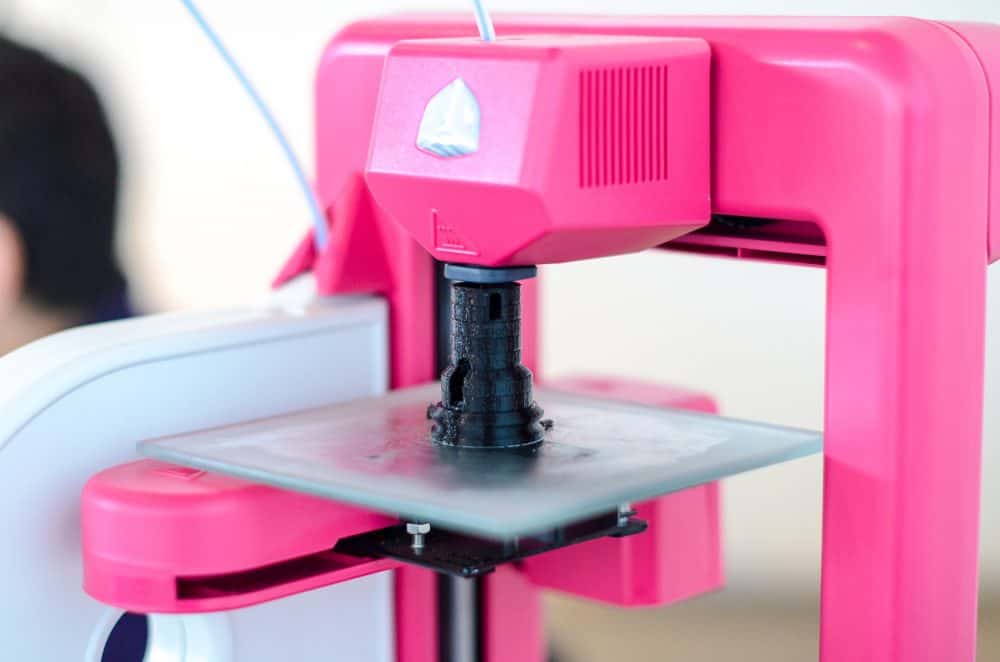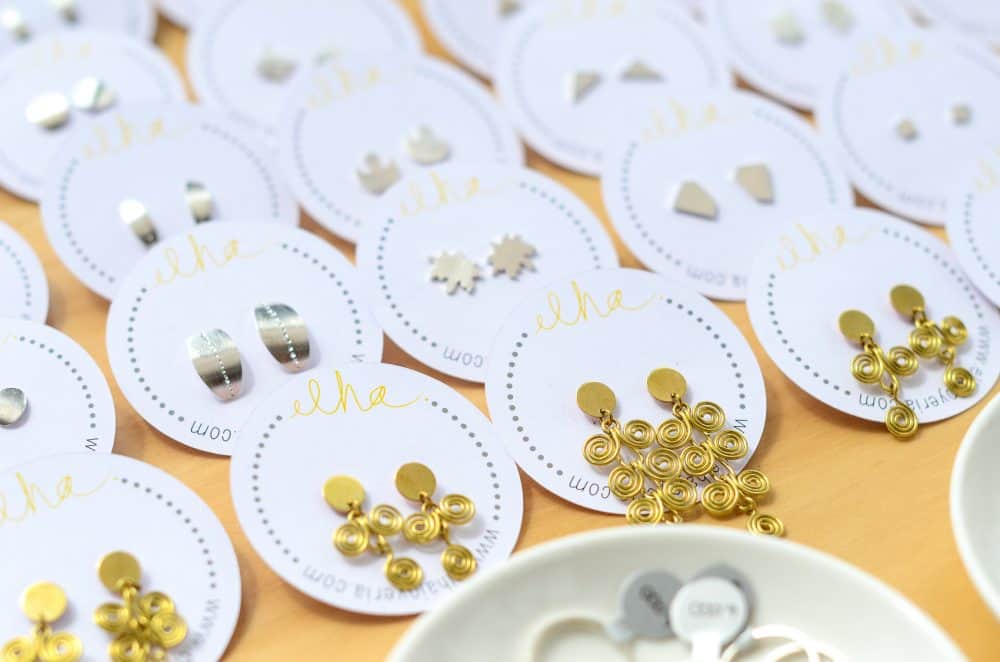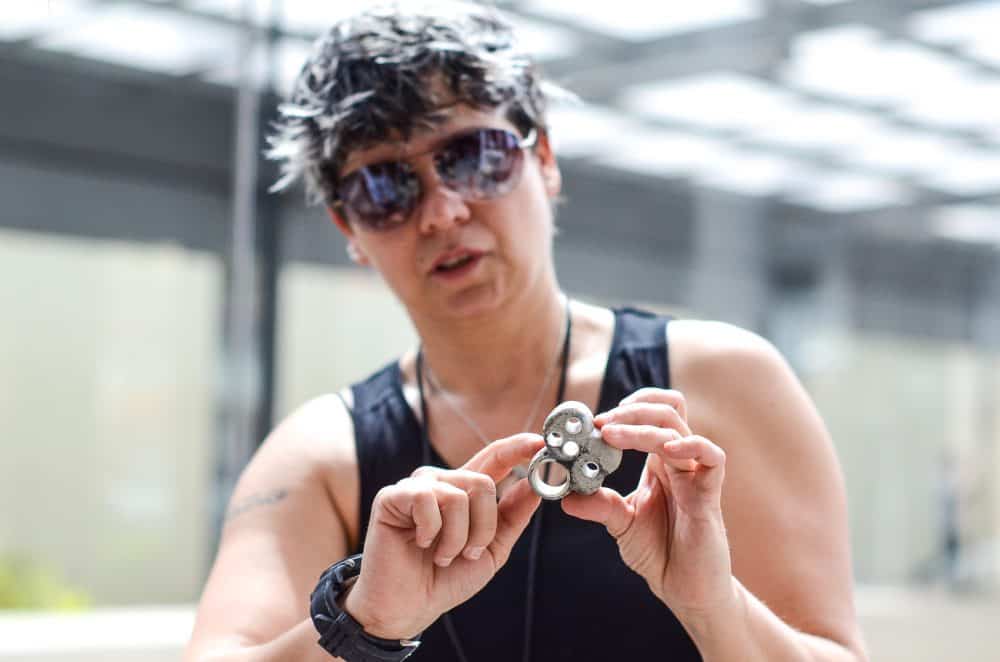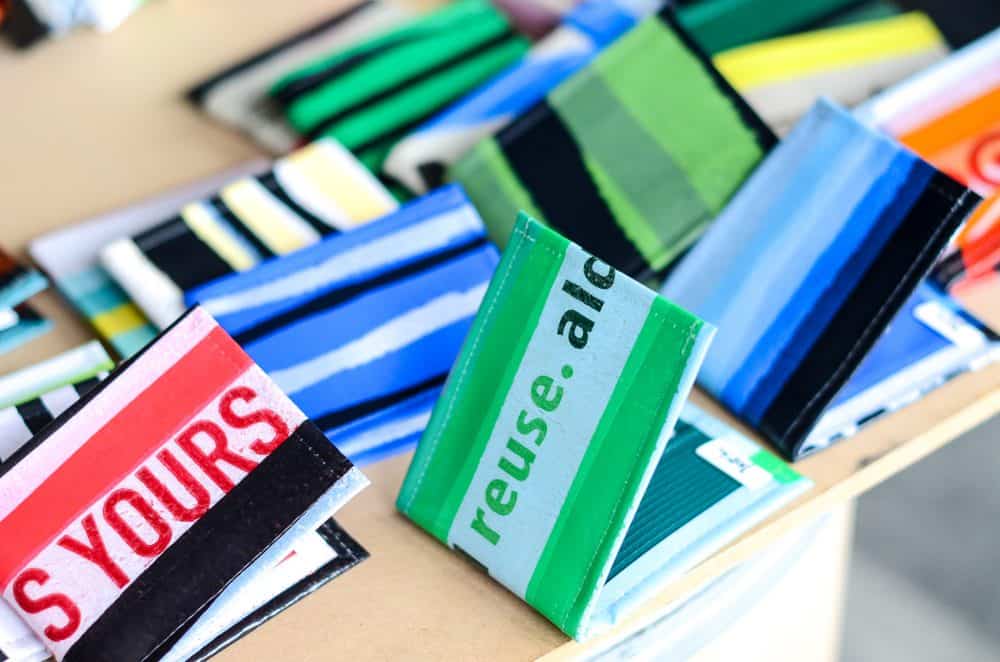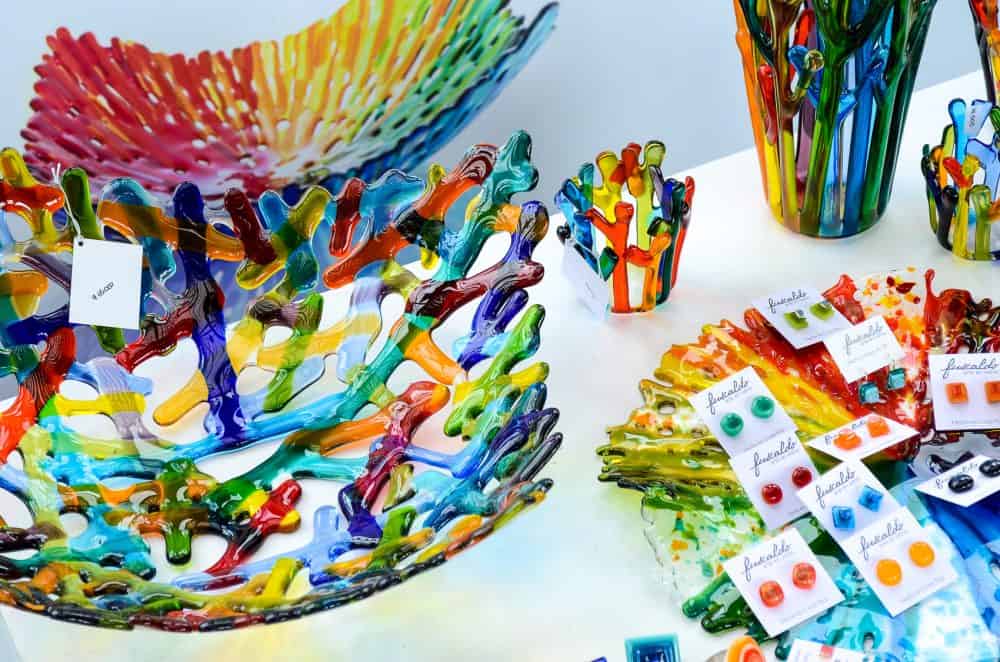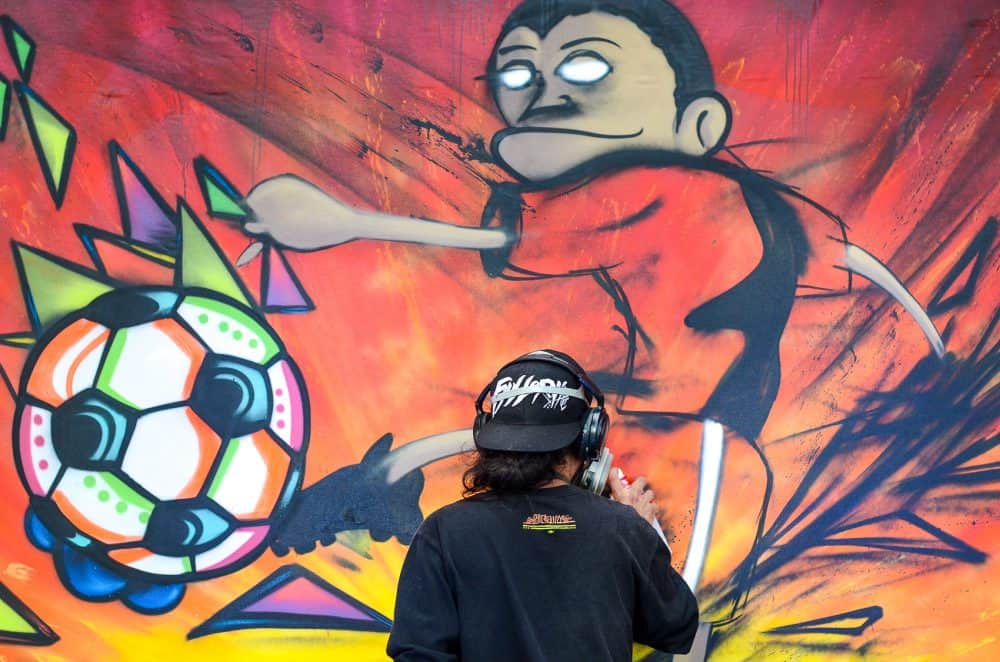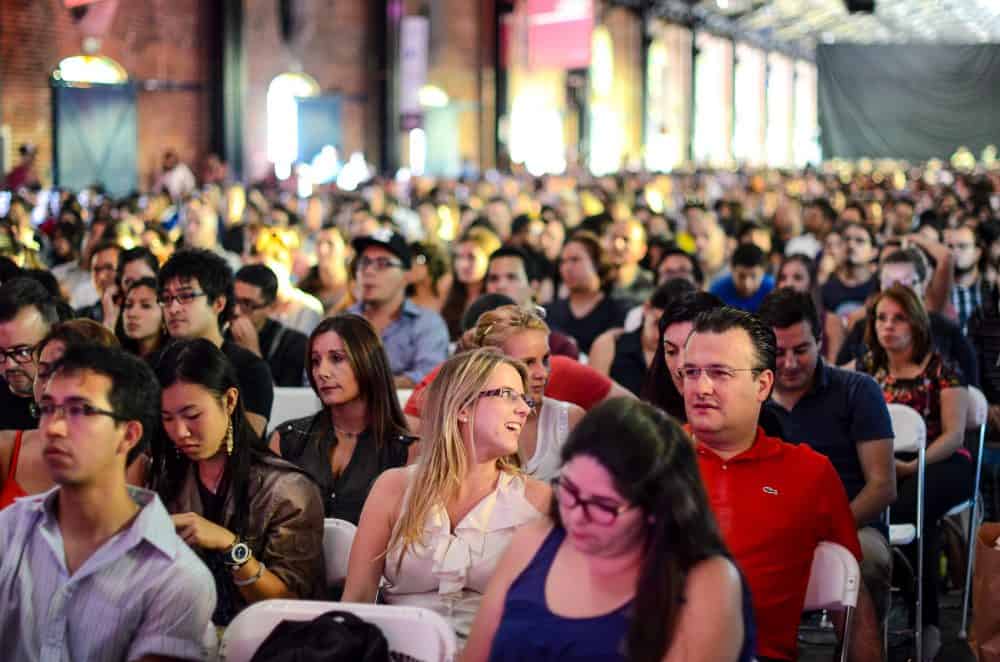Last weekend, thousands flocked to the Festival Internacional de Diseño, three intense days of presentations and workshops by a global group of creative all-stars.
FID14 kicked off at the Antigua Aduana, a reclaimed customs facility in Barrio Aranjuez, San José, and closed with a blowout bash at Club Vértigo Saturday night.
“We bought 2,180 chairs [for the lectures] and they were all full,” said organizer Alfredo Enciso, who co-founded the event in 2010.
Enciso estimates that the typical FID crowd is split 60-40, students to creative professionals. But each year the festival also draws a few unusual suspects such as lawyers, bankers and business leaders – a trend likely to continue given the rising popularity of applying “design thinking” to corporate strategy.
“From the beginning, our goal was to make the event really accessible to people,” Enciso said.
Creative chaos
FID may be accessible, but it is also distinctly high energy. This year’s itinerary featured a dizzying array of lectures, workshops, exhibitions and contests at participating venues all over the city.
Between sessions, participants refueled with coffee, baked goods and small plates from local eateries Kalú and Al Mercat, an organic restaurant in Barrio Escalante, and shopped the stalls of nearly 50 local artisans selling jewelry, clothes, furniture and other items, all painstakingly hecho a mano.
And that was just the daytime lineup.
“Noches del FID” were just as jam-packed, with dinnertime graffiti demonstrations, flamenco dancing and live music. Anyone still standing at 9 p.m. kept the FID party going at hipster hotspots like El Steinvorth and Hoxton Pub.
Unfortunately, official FID14 after parties – and the courtesy shots that went with them – were probably a bad idea for folks planning to attend small-group talleres, which started bright and early on Friday and Saturday. Here are a few of the standouts from those morning sessions:
At the Museo de Arte y Diseño Contemporáneo, Costa Rican company 3D Systems introduced attendees to the wonders of 3D printing, a process that involves building up layers of resin, gesso or plastic into a three-dimensional object. Relatively new to Costa Rica, the technology doesn’t just offer creative opportunities for artists and designers; it is already changing how companies make everything from machine parts to prosthetic limbs. It’s also just plain cool.
Fashionistas had the chance to get up close and personal with fashion designer Michelle Lesniak, 2013 winner of the hit reality show “Project Runway,” during an intimate Q&A session at Hotel TRYP Sabana. When we caught up with her afterwards, Lesniak said the discussion went really well – after she calmed her initial jitters.
Pedro Miguel Schiaffino’s cooking demonstration disproved the stereotype that Ticos aren’t that into gastronomy. Local foodies packed into Al Mercat to learn how the Peruvian chef transforms simple Amazonian ingredients into couture cuisine through age-old techniques like fermentation, smoking and acidification. The group sampled shrimp ceviche, tucked into potatoes baked in soil, and fed each other spoons of eye-wateringly spicy broth. At times, the “oohs” and “ahs” reached such a crescendo it was hard to hear the chef.
Process makes perfect
And then there were the main stage lectures at the Antigua Aduana. More than 20 presentations were delivered by the likes of Hani Rashid, Harry Pearce, Clive Wilkinson, Cindy Gallop and Spencer Tunick – all considered pioneers and thought leaders in their respective branches of art and design.
Lectures emphasized process over product, an intentional curatorial decision by festival organizers. Speakers were asked to “share their processes, share their ideas,” Enciso explained, not just their portfolios.
The focus on process prevented hours upon hours of portfolio slideshows – a lesson organizers learned the hard way at the first FID event – and brought a cohesiveness to the diverse speaker series. By Saturday, a common theme had started to emerge from the talks: persistence, personality and passion pays off – at least, eventually.
If anyone were the poster child for persistence, it would be James Sommerville. Now vice president of global design for Coca-Cola, Sommerville began his career in Yorkshire, England, a mining town hit with recession in the 1980s.
“It wasn’t a great time to be a 16-year-old,” said Sommerville. Or to open up a design shop, one would imagine. But in the midst of conflict, austerity and hopelessness, Sommerville and his friend Simon Needham did just that.
Their start up capital came from change earned making chalk sidewalk drawings of Disney characters, and they named their design firm Attik, after their first modest workspace. From these humble origins, Attik grew into globally recognized firm, known for award-winning work with brands like Virgin, Adidas, Sheraton, Heineken and Camel.
Despite his success, Sommerville still retains his connection to gritty urban youth culture, something visible in his World Cup 2014 campaigns for Coca-Cola.
The work started in true Sommerville style: with a walk and a camera down the back alleys of Brazil. “The streets were like a gallery of art,” Sommerville remembered.
He fell in love with Brazilian graffiti, especially paintings by Speto, a street artist known for lively, stylized depictions of everyday life. Speto and Sommerville worked closely over 128 days to create iconic logos based on original artist woodcuts.
Related brand elements – art exhibitions, interactive web-based projects, and this tear-jerking film about a blind soccer team in Brazil – worked together to underscore Sommerville’s goal: “bringing the world to the stadium of World Cup.”
Designer Jessica Walsh hit a lighter note with “Creative Play,” a talk peppered with self-deprecating humor, profanity and even a few naked pictures.
Something of a prodigy, by her tweens Walsh was already coding websites – and teaching others to do the same. Later, she veered toward the aesthetic side of web design over the technical, earning a BFA at the Rhode Island School of Design. Walsh, now 27, held positions at Pentagram Design and Print Magazine before her mentor, design heavyweight and FID alum Stefan Sagmeister, asked her to join his studio.
Sagmeister & Walsh is known for playfully pushing creative boundaries in branding and identity work for clients – and for their own studio.
The two partners appear stark naked in a publicity postcard they sent out when they joined forces, a nod to the piece Sagmeister used to announce his firm 20 years earlier. All six staff members float weightless in the company’s official staff photos, nude except for the astronaut helmets they wear.
“If you have a message that you want to get out really, really fast, I highly recommend getting naked,” Walsh told the crowd.
Passion play
Walsh also recommended that designers make space in their lives for “passion projects,” unpaid creative activities that allow them to take risks, be vulnerable and explore ideas. Her latest: “40 Days of Dating,” where she and longtime male friend Timothy Goodman pursued a romantic relationship for 40 days, and then published a he-said-she-said diary about it online. The relationship didn’t work out, but a movie deal might; Warner Bros bought the rights last September.
Essentially, FID itself is a passion project – that of Alfredo Enciso. Originally from Peru, Enciso moved to Costa Rica to study graphic design in college, and never had plans to leave.
“I got a job a really fast and then I got another better job, … and then I got engaged,” said Enciso, 30. “One thing led to the other, and I really enjoy the country.”
He started working for ad agency JWT in 2006, quickly rising to art director for the group’s San José office. “It was all great, but then I always wanted to go back to graphic design,” the Clio Award-winning designer said.
In 2010, he formed his own design group Pupila Estudio, and FID was one of their first projects. Four years later, Pupila has clients all over the world, and the homegrown design festival has become a globally relevant event.
“On the continent there are three multidisciplinary events,” he explains, referring to Gravity Free, C2-MTL and FID. “Right now the FID is the most accessible one.”
Tickets for C2-MTL, a Montreal event focused on the intersection of creativity and business, will set you back a whopping $3,600 each, making FID’s $75-$140 price tag look like chump change. Gravity Free, billed (strangely) as “the world’s only multidisciplinary design conference,” limits participation to 300 designers, though conference videos are available through a donation-based subscription service on their website.
“They are bringing pretty much the same speakers we are,” says Enciso. “We are pretty much charging $5 per talk and the students get the best of it because they come with open minds [and] really hungry.”
Fifteen-year-old Mónica González, a tenth grader at Lincoln School, is one such student.
“I decided to attend FID because design is what I love,” she told The Tico Times in an email. “FID seemed like an amazing opportunity to explore multiple areas of design and learn from professionals, so I decided to go in order to learn more about what I love.”
And it was worth cutting class to do it.
González said the best aspects of the event were the workshop she took and the environment filled with people who shared her passion for design.
“I learned in two days what I hadn’t learned in years of exploring art. The workshop involved photography and graphic design, which was incredibly interesting. The environment was another of my favorite things. … Nearly everyone was in a positive attitude and most of the people there were open-minded. … It simply built an atmosphere full of positive vibration.”
That said, her main takeaway ended up being more personal than creative:
“There was one thing that changed my perspective on life,” she wrote. “I learned that you cannot be afraid to pursue your dreams, because if you do things with passion and dedication, there’s nothing to be afraid of.”
